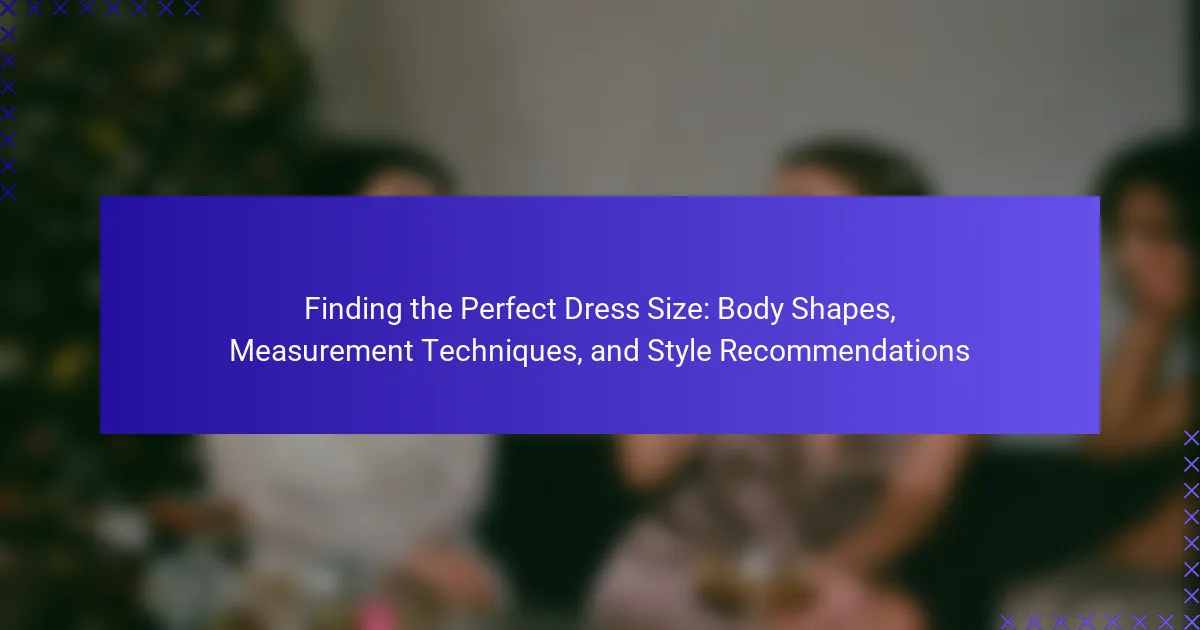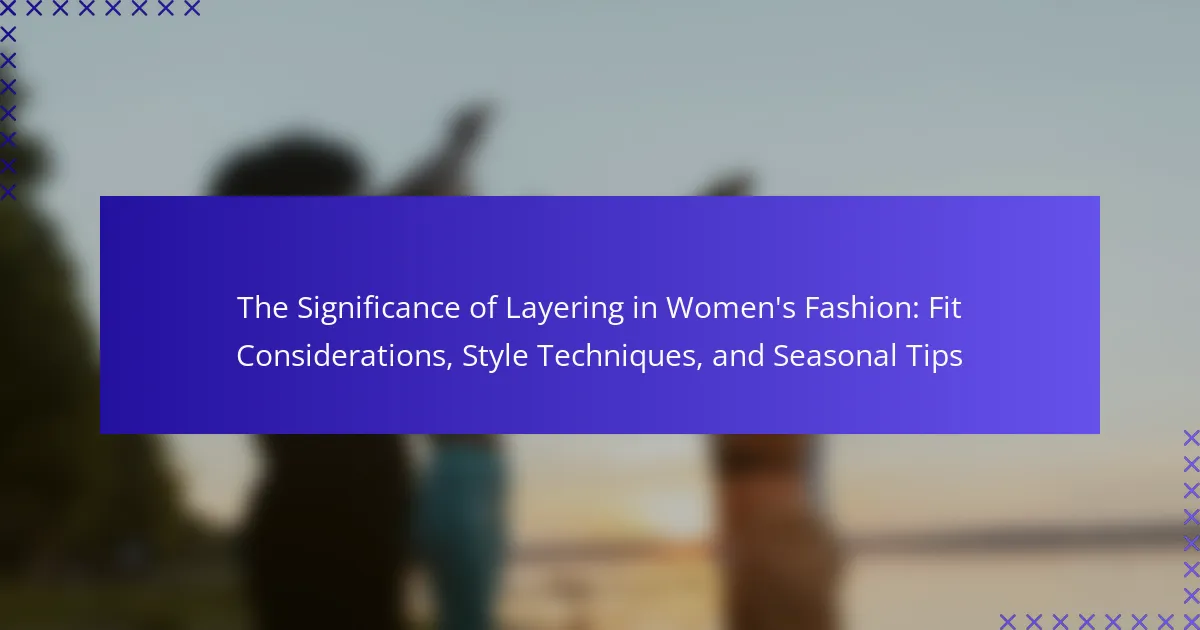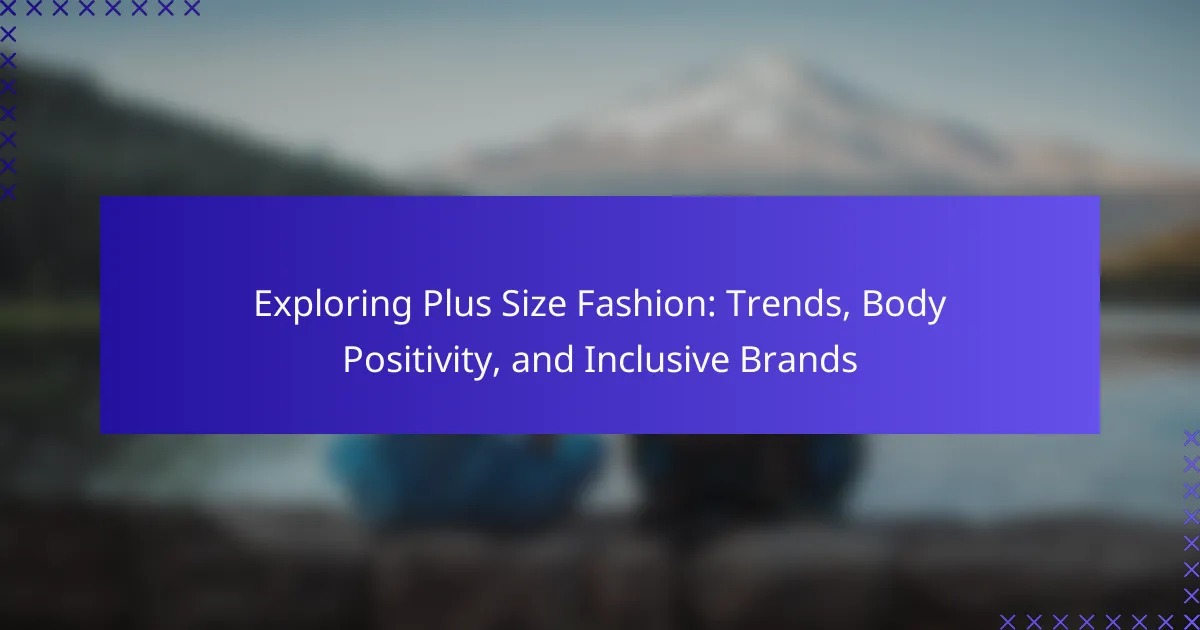Women’s size standards have evolved significantly since their inception in the early 20th century, when clothing was primarily custom-made. The U.S. government’s 1939 study established standardized sizing categories, which have since changed due to shifts in body shapes and consumer expectations. Recent trends emphasize inclusivity, with brands expanding size ranges and adopting size-neutral marketing strategies to reflect diverse body types. The push for body positivity and transparency in sizing is reshaping industry practices, as consumers increasingly advocate for accurate size guides and representation in fashion. These developments highlight a cultural shift towards acceptance of all body shapes and sizes in the fashion industry.
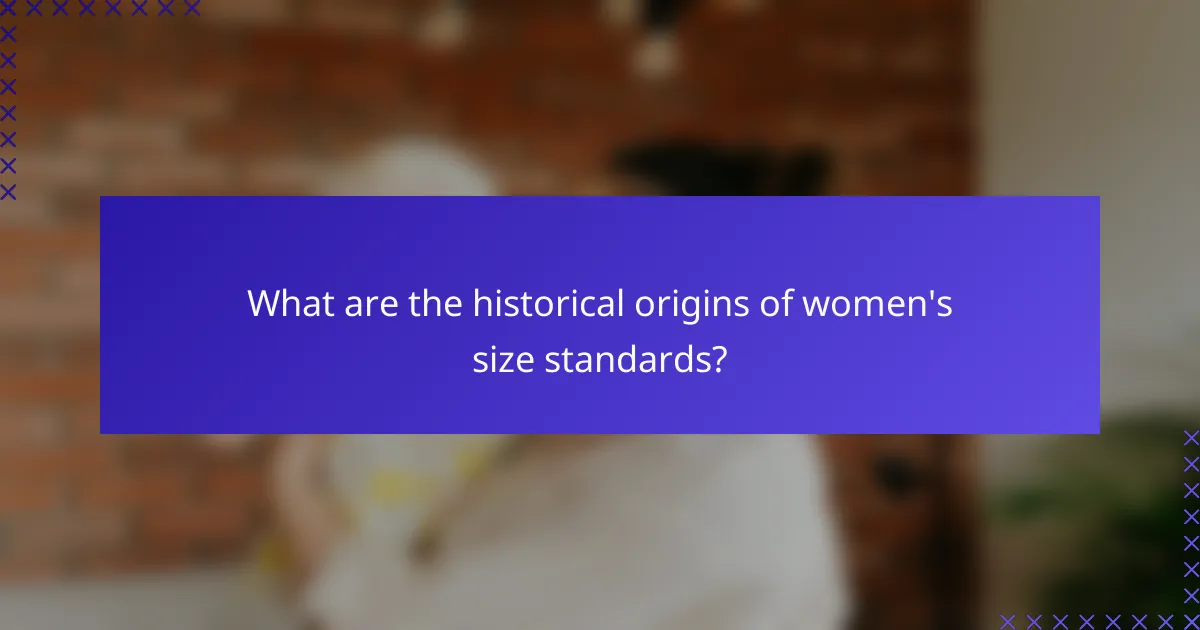
What are the historical origins of women’s size standards?
Women’s size standards originated in the early 20th century. Prior to this, clothing was often custom-made, with no standardized sizing. In 1939, the U.S. government conducted a study to measure women’s body dimensions. This study aimed to create a sizing system for ready-to-wear clothing. The results led to the introduction of size categories such as small, medium, and large. Over the years, these standards evolved due to changes in body shapes and consumer demand. The introduction of vanity sizing in the 1960s further complicated the sizing system. Today, women’s sizes vary significantly across brands and countries.
How have societal norms influenced women’s size standards over time?
Societal norms have significantly influenced women’s size standards throughout history. In the early 20th century, the ideal female body was often portrayed as curvy and voluptuous. This was reflected in fashion trends and media representations of women. By the 1960s, the emergence of the “Twiggy” model popularized a much slimmer ideal. This shift was driven by changing cultural perceptions of beauty and femininity.
In the 1980s and 1990s, the rise of supermodels reinforced the thin ideal, leading to increased societal pressure on women to conform. Studies indicate that such standards have contributed to body image issues among women. Recent years have seen a push for body positivity and inclusivity, challenging traditional norms. Fashion brands are beginning to embrace diverse body types, reflecting changing societal attitudes towards women’s size standards.
What key events marked significant changes in women’s sizing?
The introduction of standardized sizing in the 1950s marked a significant change in women’s sizing. This system aimed to create consistency across the fashion industry. In 1970, the U.S. Department of Commerce initiated a study to establish a new sizing system based on body measurements. This study led to the creation of the Size USA project in 1990, which provided updated size charts reflecting modern women’s body shapes. The rise of plus-size fashion in the 2000s further transformed sizing standards. This shift acknowledged the demand for sizes beyond traditional ranges. The launch of size-inclusive brands in the 2010s emphasized diversity in body types. These events collectively reshaped women’s sizing in the fashion industry.
How did the fashion industry contribute to the evolution of size standards?
The fashion industry influenced the evolution of size standards through changing consumer demands and marketing strategies. Initially, size standards were based on body measurements. However, as styles evolved, the industry began to prioritize aesthetic appeal over accurate sizing. Designers often created limited size ranges, leading to inconsistencies across brands.
In the mid-20th century, the introduction of ready-to-wear collections further complicated sizing. The industry adopted vanity sizing, where clothing sizes were labeled smaller than actual measurements to appeal to consumers. This practice became widespread, creating confusion around standard sizes.
Moreover, the rise of body positivity movements prompted brands to expand their size offerings. This shift aimed to include diverse body types and promote inclusivity. As a result, the fashion industry has continually adapted size standards to reflect societal changes and consumer expectations.
Overall, the fashion industry’s focus on trends, marketing, and consumer preferences has significantly shaped the evolution of size standards.
What role did body image perceptions play in shaping size standards?
Body image perceptions significantly influenced the development of size standards. These perceptions are shaped by cultural, social, and media influences. Over time, ideal body types have evolved, reflecting societal values. For instance, the 1950s idealized curvier figures, while the 1990s favored slimmer silhouettes. Studies show that media representation impacts women’s self-image and their perception of acceptable sizes. Research indicates that exposure to idealized body images can lead to body dissatisfaction. This dissatisfaction often drives changes in size standards within the fashion industry. Size standards are adjusted to align with prevailing body image perceptions. Thus, body image perceptions play a crucial role in defining what is considered an ideal size.
How have media representations impacted societal expectations of women’s sizes?
Media representations have significantly shaped societal expectations of women’s sizes. The portrayal of women in advertisements, films, and social media often emphasizes thinness as the ideal body type. This consistent messaging creates pressure for women to conform to these standards. Research indicates that exposure to such media can lead to body dissatisfaction among women. A study by Tiggemann and Slater (2014) found that young women who frequently viewed thin-ideal images reported lower body satisfaction. Furthermore, the fashion industry’s focus on a narrow size range reinforces these expectations. As a result, many women feel compelled to achieve unrealistic body standards. This cycle perpetuates negative body image and affects mental health. Overall, media representations play a crucial role in defining and influencing societal norms regarding women’s sizes.
What historical figures or movements challenged traditional size norms?
Historical figures and movements that challenged traditional size norms include the Suffragette movement and body positivity advocates. The Suffragettes in the early 20th century promoted women’s rights and self-acceptance, which influenced perceptions of body image. Additionally, the body positivity movement, emerging in the late 20th century, emphasized acceptance of diverse body sizes. Prominent figures like Marilyn Monroe and Lizzo have also advocated for body diversity, challenging societal standards. These movements and individuals have reshaped cultural attitudes towards body size and beauty.
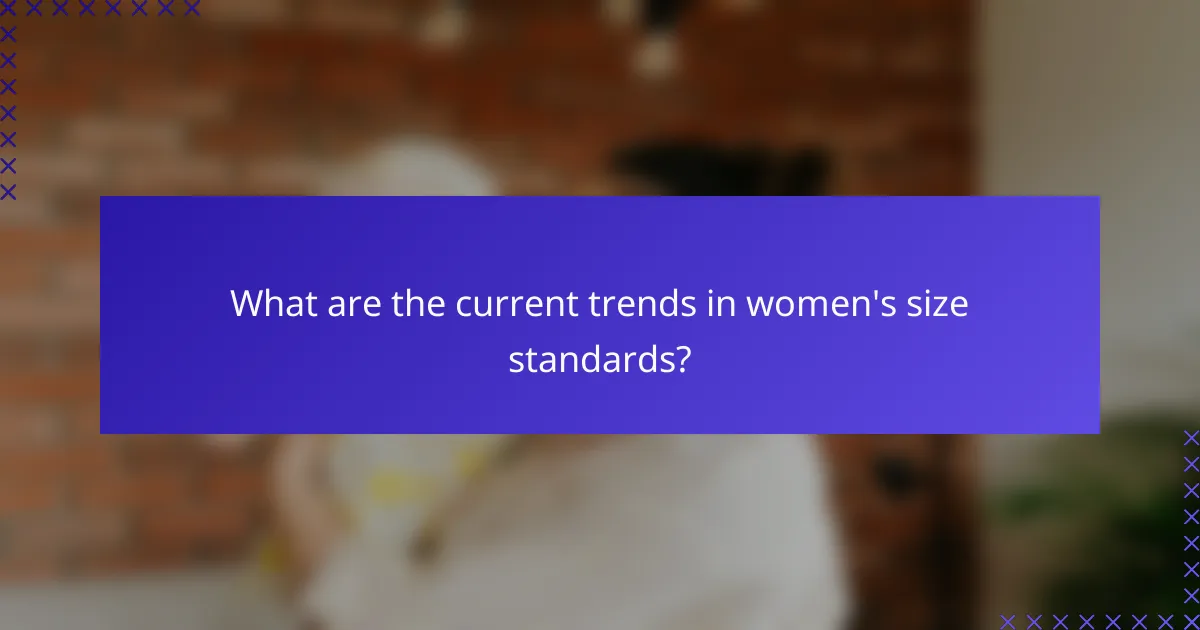
What are the current trends in women’s size standards?
Current trends in women’s size standards are shifting towards inclusivity and diversity. Many brands are expanding their size ranges to accommodate a broader spectrum of body types. The average American woman’s size has increased over the years, now typically around size 16. Retailers are increasingly adopting size-neutral marketing strategies. This includes using models of various sizes in advertising campaigns. Additionally, there is a growing demand for brands to provide accurate size guides. Consumers are advocating for transparency in sizing, leading to changes in industry standards. The push for body positivity is influencing how sizes are defined and presented. These trends reflect a broader cultural shift towards acceptance of all body shapes and sizes.
How have contemporary brands adapted to changing size standards?
Contemporary brands have adapted to changing size standards by implementing inclusive sizing practices. Many brands now offer a wider range of sizes to accommodate diverse body types. This shift is driven by consumer demand for representation and body positivity. Brands like Aerie and Savage X Fenty have embraced this change by showcasing models of various sizes. Additionally, companies are revising their sizing charts to reflect real body measurements. Research shows that 67% of women feel that current sizing is inconsistent. This inconsistency has prompted brands to prioritize fit over traditional sizing categories. As a result, many brands are focusing on body inclusivity in their marketing strategies.
What innovative sizing systems are being introduced in the fashion industry?
Innovative sizing systems in the fashion industry include 3D body scanning and digital fit technologies. These systems use advanced technology to create accurate body measurements. Companies like Fit3D and Nettelo offer 3D scanning solutions. They capture precise body dimensions and proportions. This data helps brands create better-fitting clothing. Size recommendations are tailored based on individual body shapes. Another system is the use of AI-driven algorithms. These algorithms analyze consumer data to predict sizing needs. Brands like ASOS and Zara are adopting these methods. This shift aims to reduce returns and improve customer satisfaction.
How do current consumer demands influence size offerings?
Current consumer demands significantly influence size offerings in the fashion industry. Brands are increasingly adapting to the diverse body types and sizes requested by consumers. This shift is driven by a growing awareness of body positivity and inclusivity. Research indicates that 67% of women feel frustrated by the limited size ranges available. Consequently, many companies have expanded their size offerings to include plus sizes and petite options. This trend reflects the desire for representation and accessibility in fashion. As a result, brands that fail to meet these demands risk losing market share to more inclusive competitors.
What challenges do women face with current sizing standards?
Women face significant challenges with current sizing standards due to inconsistent measurements across brands. Many brands use different sizing charts, leading to confusion and frustration for consumers. Approximately 80% of women wear the wrong size, according to a study by the American Society of Testing and Materials. This discrepancy results in a lack of standardization, making it difficult for women to find well-fitting clothing. Additionally, societal pressures and unrealistic body ideals further complicate the sizing issue. Women often feel discouraged by the negative shopping experience caused by these sizing challenges. This situation highlights the urgent need for a more unified and inclusive sizing system in the fashion industry.
How do inconsistencies in sizing across brands affect women’s shopping experiences?
Inconsistencies in sizing across brands negatively affect women’s shopping experiences. Women often face confusion when determining their size due to varying measurements. This leads to frustration during the shopping process. A study by the American Society for Testing and Materials found that women can experience size discrepancies of up to two sizes between brands. Such inconsistencies can result in increased returns and exchanges. Women may also feel discouraged from shopping due to the lack of standardization. This inconsistency undermines consumer confidence in purchasing decisions. Overall, sizing discrepancies complicate the shopping experience for women and can impact brand loyalty.
What impact does the lack of inclusivity have on body diversity in fashion?
The lack of inclusivity negatively impacts body diversity in fashion. It perpetuates narrow beauty standards that exclude various body types. This exclusion leads to a limited representation of women in media and advertising. According to a study by the University of California, Los Angeles, 67% of women feel underrepresented in fashion. The absence of diverse body types can harm self-esteem and body image. It also restricts consumer choice, as many women cannot find clothing that fits their bodies. The fashion industry, therefore, misses out on a significant market segment. Ultimately, inclusivity fosters a healthier perception of body diversity.
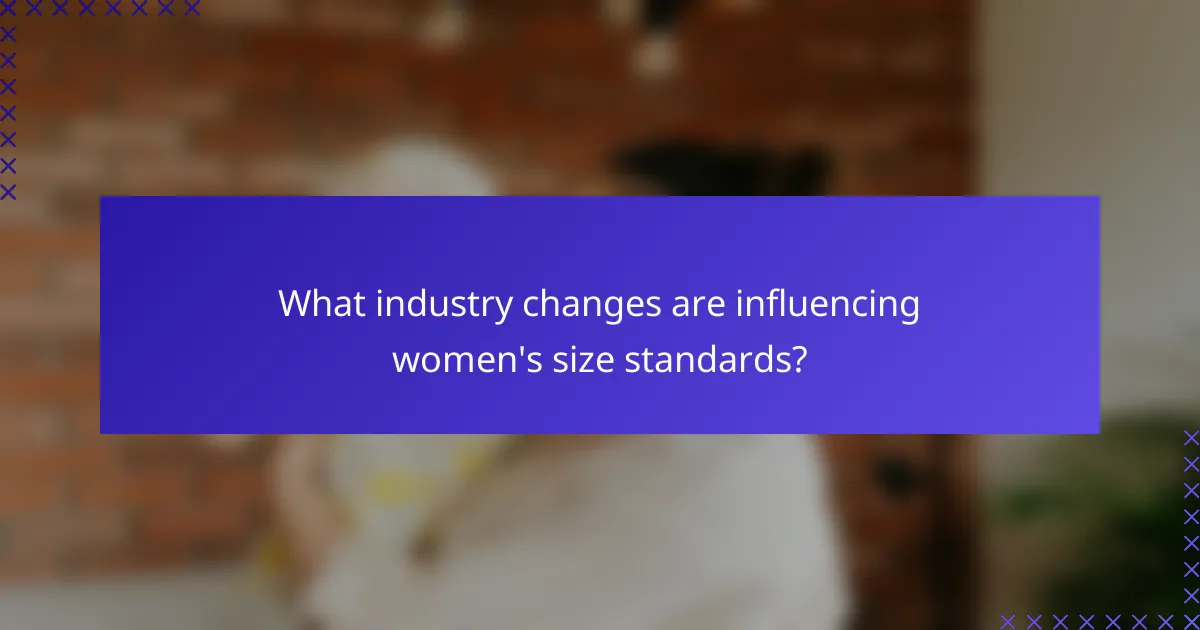
What industry changes are influencing women’s size standards?
The fashion industry is increasingly influencing women’s size standards through inclusivity and body positivity movements. Brands are expanding size ranges to cater to diverse body types. This shift is driven by consumer demand for representation and authenticity. Retailers are adopting more accurate sizing systems based on real body measurements. Data from the 2021 Fashion Retail Study shows that 67% of women prefer brands that offer extended sizes. Social media campaigns are promoting body diversity, challenging traditional beauty norms. Additionally, collaborations with plus-size influencers are reshaping marketing strategies. These changes reflect a broader societal push towards acceptance of all body shapes.
How are technology and data shaping the future of sizing in fashion?
Technology and data are revolutionizing sizing in fashion by enabling more accurate and personalized fit solutions. Advanced algorithms analyze body measurements and shape, resulting in better size recommendations. 3D body scanning technology captures precise body dimensions, allowing brands to create custom-fit garments. Data analytics helps brands understand customer preferences and sizing trends, improving inventory management. Virtual fitting rooms enhance the online shopping experience by allowing customers to visualize fit before purchase. According to a McKinsey report, personalized sizing can reduce return rates by up to 30%. These innovations are leading to a more inclusive and efficient fashion industry.
What role does 3D body scanning play in creating accurate size representations?
3D body scanning plays a crucial role in creating accurate size representations. It captures precise body measurements with high accuracy. This technology uses infrared sensors and cameras to create a detailed 3D model of the body. The data collected includes various dimensions such as circumference, height, and volume. Traditional sizing methods often rely on standard size charts, which can be inaccurate. In contrast, 3D body scanning provides individualized measurements. Research indicates that using these scans can reduce sizing discrepancies in apparel. A study by the University of Cambridge found that 3D scanning improved fit accuracy by up to 30%. This advancement enhances customer satisfaction and reduces return rates in the fashion industry.
How are brands leveraging customer feedback to refine size offerings?
Brands are leveraging customer feedback to refine size offerings by implementing data-driven strategies. They collect feedback through surveys, social media, and online reviews. This data provides insights into customer preferences and fit issues. Brands analyze this information to identify common size discrepancies. They adjust their size charts accordingly to better meet customer needs. For example, some brands have expanded their size ranges based on feedback indicating demand for larger or smaller sizes. Others have introduced customizable sizing options to enhance fit. This approach not only improves customer satisfaction but also drives sales by reducing return rates.
What initiatives are being taken to promote size inclusivity?
Various initiatives are being taken to promote size inclusivity in the fashion industry. Brands are expanding their size ranges to accommodate diverse body types. For example, companies like Aerie and ASOS offer sizes up to 4X. Many retailers are also implementing body-positive marketing campaigns. These campaigns feature models of different sizes and promote self-acceptance. Additionally, some organizations advocate for size inclusivity through public awareness programs. Research indicates that inclusive sizing can lead to increased sales and customer loyalty. The push for inclusivity is reshaping industry standards and consumer expectations.
How are advocacy groups working to change industry standards?
Advocacy groups are working to change industry standards by promoting body inclusivity and challenging size norms. They engage in campaigns that raise awareness about the diversity of women’s body shapes and sizes. These groups conduct research to highlight the negative impact of unrealistic standards on women’s health and self-esteem. They collaborate with brands to encourage the adoption of more inclusive sizing practices. Advocacy groups also lobby for policy changes that support fair representation in fashion and media. Their efforts have led to increased visibility for plus-size models and the demand for extended size ranges. For instance, the #PlusIsEqual campaign has successfully influenced major retailers to expand their offerings. Through education and outreach, advocacy groups aim to create a more equitable industry for all women.
What impact do social media campaigns have on size inclusivity awareness?
Social media campaigns significantly enhance size inclusivity awareness. These campaigns amplify diverse body representations and challenge traditional beauty standards. Research indicates that brands promoting size diversity see increased engagement and positive consumer sentiment. For example, a study by the University of California found that campaigns featuring plus-size models led to a 20% increase in brand favorability. Furthermore, social media platforms facilitate community discussions around body positivity, fostering a supportive environment. This increased visibility contributes to a broader cultural shift towards acceptance of all body types. Overall, social media campaigns play a crucial role in shaping public perceptions of size inclusivity.
What practical tips can consumers use when navigating women’s size standards?
Consumers can navigate women’s size standards by understanding that sizes vary significantly across brands. Each brand has its own sizing chart, which may not align with standard measurements. It is crucial to take accurate body measurements, including bust, waist, and hips, before shopping. Comparing these measurements to the specific brand’s size chart can help in selecting the right size. Additionally, reading customer reviews may provide insights on fit and sizing accuracy. Trying on clothing whenever possible is beneficial, as fit can differ even within the same brand. Lastly, being aware of return policies allows consumers to exchange sizes easily if needed.
The main entity of the article is women’s size standards, which have evolved significantly from their historical origins in the early 20th century to current trends emphasizing inclusivity and diversity. The article examines the impact of societal norms, media representations, and key events that have shaped size standards, highlighting the challenges women face with inconsistent sizing across brands. It also explores how contemporary brands are adapting to consumer demands for representation and body positivity, along with innovative technologies like 3D body scanning that are influencing future sizing practices. Additionally, advocacy groups and social media campaigns are discussed as crucial factors driving awareness and change in the fashion industry regarding size inclusivity.

